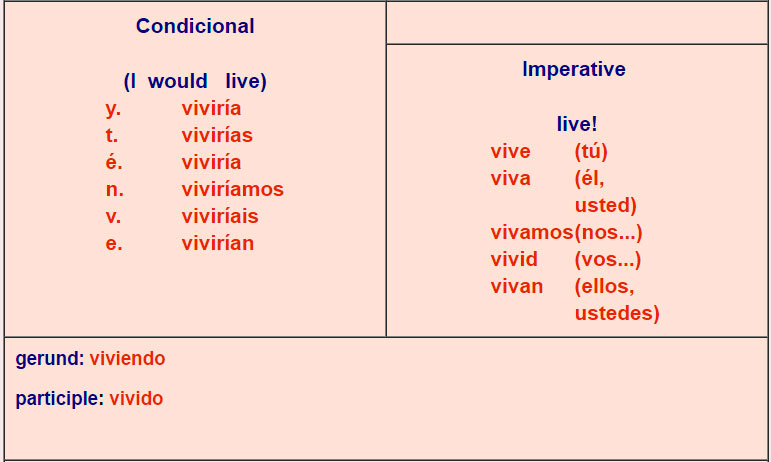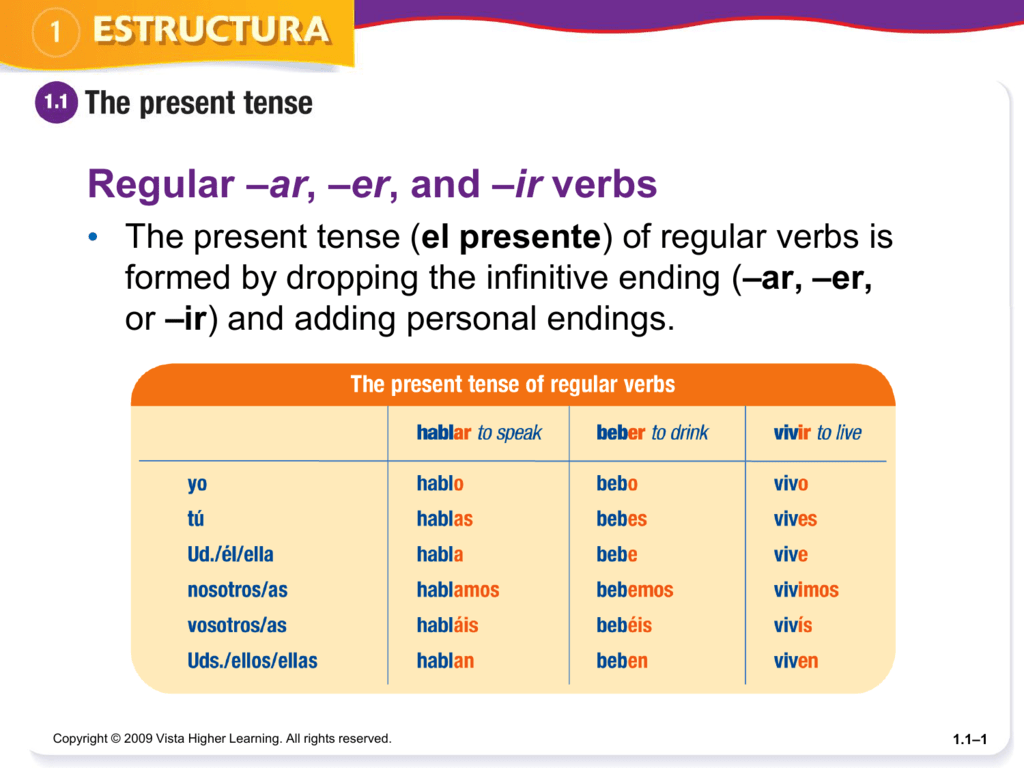
However, they can be used at any time, especially for emphasis or clarification. The verb endings indicate who is doing the action, so often the subject pronouns are omitted. The Spanish present tense is equivalent to three English forms. Like all -er and -ir verbs, vivir and comer conjugations differ from each other in the nosotros and vosotros forms. All regular -er and -ir verbs are conjugated in this way, by adding the ending on to the stem.

Below, comer (to eat), a common -er verb, and vivir (to live), a common -ir verb are divided by their stems (com-, viv-) and their conjugation endings, which change with the subject. If the subject is they (ellos/ellas) or you-all – formal (ustedes), conjugate by dropping the ending and adding -en (-er verbs).ER and IR verb conjugations in the present tense are almost identical. You-all eat, you-all are eating, you-all do eat Vosotros coméis (comer – er + éis = coméis) The list contains all the regular and irregular verbs ending in -ER.
ER ENDING VERBS IN SPANISH FULL
Click on the verb to see its full conjugation chart. Use the search box at the top of the list to do a fast search. If the subject is you-all – informal (vosotros/vosotras), conjugate by dropping the ending and adding -éis for -er verbs. Find a full list of all the -ER verbs underneath.

Nosotros comemos (comer – er + emos = comemos) If the subject is we (nosotros/nosotras), conjugate by dropping the ending and add -emos for -er verbs. tu aprendes la leccin, You learn the lesson. He eats, she is eating, you (formal) do eat Spanish phrases Regular ER Ending Verb Conjugation yo aprendo la leccin, I learn the lesson. Él/ella/usted come (comer – er + e = come) If the subject is he (él), she (ella) or you – formal (usted), conjugate by dropping the ending and adding -e (-er verbs). If the subject is you – informal (tú), conjugate by dropping the ending and adding -es (for -er verbs). If the subject is I (yo), conjugate by dropping the ending and add -o. In Spanish, you conjugate verbs by changing the ending. In this lesson, we will use the model verb: comer. The stem is everything that’s left after you remove the ending. Remember, all infinitives end in -ar, -er, or -ir. Spanish infinitives are divided into two parts: the ending and the stem. Before you can do that, you must memorize the following subject pronouns.įor a review of the subject pronouns, click here. In this lesson you will learn to conjugate regular -ar, -er, and -ir verbs (in the present tense).

Many Spanish verbs are completely regular, meaning that they follow a specific pattern of conjugation. The present tense in Spanish can mean three things. Here is the present tense conjugation of the infinitive “to speak”: To conjugate a verb means to manipulate the infinitive so that it agrees with the different possible subjects. To conjugate the regular verbs ending on -ir in the present tens, we replace the -ir with the endings -o, -es, -e, -imos, -s, -en for the respective persons. In Spanish, all infinitives end in -ar, -er, or -ir. The infinitive is the base form of the verb, such as to speak, to eat, to live, etc. Below, comer (to eat), a common -er verb, and vivir (to live), a common -ir verb are divided by their stems (com-, viv-) and their conjugation endings. The category is determined by the last two letters of the infinitive: In Spanish, there are three categories of verbs.


 0 kommentar(er)
0 kommentar(er)
